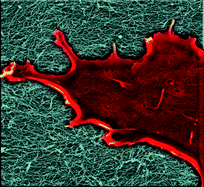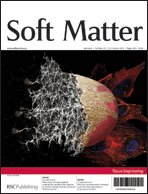The design of nanofiber scaffolds has been a key objective in tissue engineering as they structurally mimic the natural extracellular matrix (ECM) found in tissues. The continuous cross talk between cells and the surrounding matrix ligands plays a crucial role during development and wound healing which leads to tissue regeneration and repair. In an attempt to provide a nanofiber scaffold with a ligand that can promote cell adhesion and ECM production, we propose the use of our peptide-amphiphile nanofibers as a potential scaffold for tissue engineering. A fibronectin-mimetic peptide sequence containing both the cell-binding GRGDSP domain and the synergistic PHSRN domain has been recently developed in our group. It has been shown to be a specific ligand for the α5β1 integrin, and has been synthesized to a C16 single-tailed peptide-amphiphile, PR_g (with a peptide headgroup of GGGSSPHSRN(SG)5RGDSP). The PR_g peptide-amphiphiles self-assemble into nanofibers in an aqueous environment and form hydrogels. In this study, the PR_g hydrogels were characterized with cryo-scanning electron microscopy (cryo-SEM) and rheology measurements, and their surfaces were evaluated in terms of sustaining long term human umbilical vein endothelial cell (HUVEC) adhesion and proliferation, cytoskeleton formation, and secretion of extracellular fibronectin. PR_g gels were compared to polyethylene glycol (PEG) gels, PEG gels functionalized with fibronectin as well as commercially available peptide hydrogels (PuraMatrix). Our results show that the PR_g hydrogels outperform the other gels evaluated in this study and therefore hold promise as scaffolds for tissue engineering.

You have access to this article
 Please wait while we load your content...
Something went wrong. Try again?
Please wait while we load your content...
Something went wrong. Try again?


 Please wait while we load your content...
Please wait while we load your content...